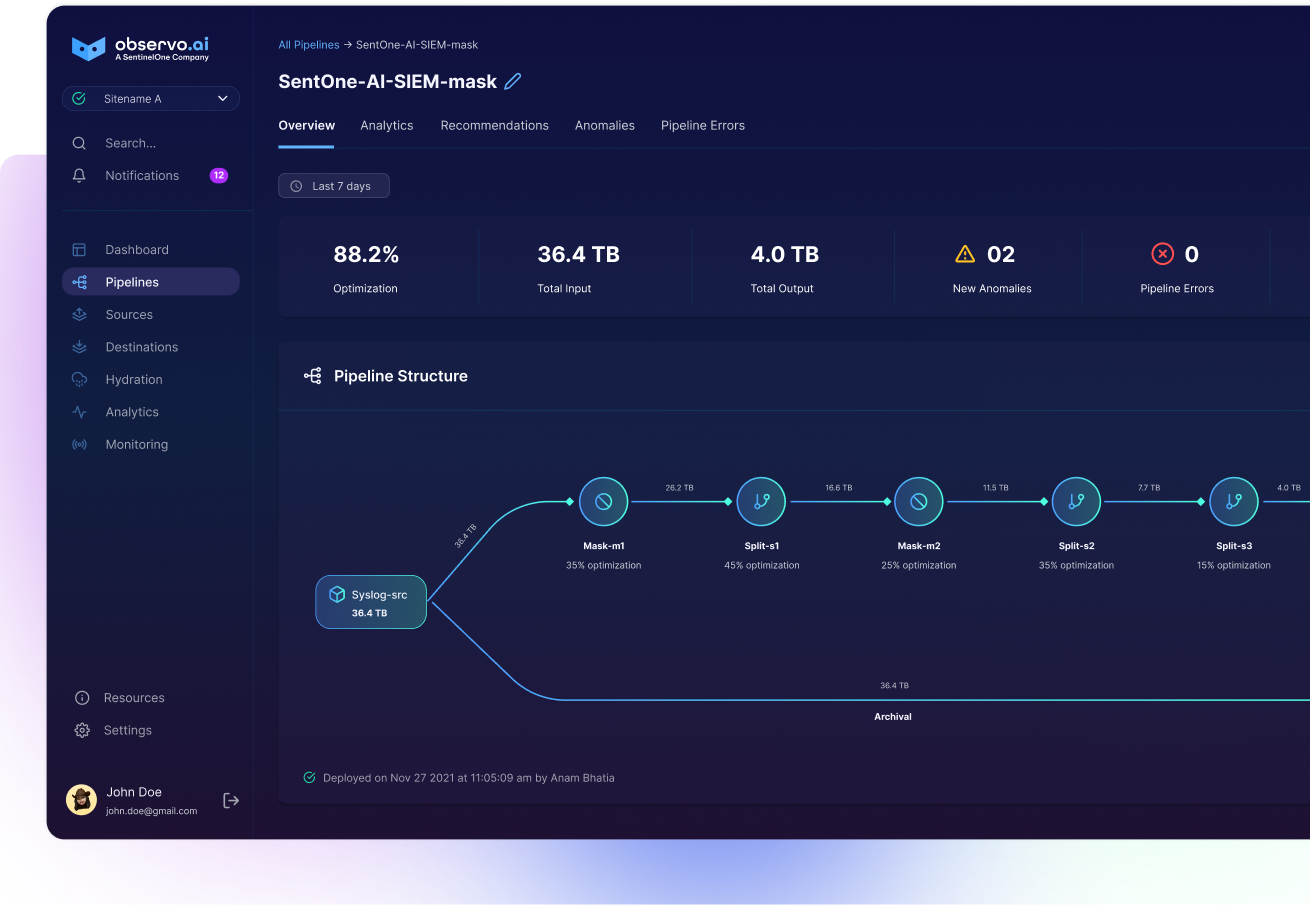Observability 101: Understanding Logs, Metrics, Events, and Traces – The Pillars of Observability

Introduction
In today's complex world of software applications and infrastructure, achieving high levels of observability is crucial for ensuring the reliability, performance, and security of your systems. To achieve this, we rely on various data types, including logs, metrics, events, and traces. In this blog, we'll delve into the definitions of these terms, explore their importance in observability, and introduce how Observo.ai's AI-powered observability pipeline can optimize data using machine learning models.
Logs
Logs are textual records of events or activities generated by applications, services, or systems. They provide a chronological history of what happened, and when it happened, and often include additional context. Here's an example of a log entry:

Logs are essential for diagnosing issues, troubleshooting, and auditing system behavior. They are particularly valuable for security event logs, which record security-related incidents and are a key component of any Security Information and Event Management (SIEM) system. Observo.ai's observability pipeline can collect, centralize, and analyze security event logs to provide insights into potential security threats.
Metrics
Metrics are numerical data points that quantify the state of a system at a specific point in time. They represent various aspects of a system's health, such as CPU usage, memory consumption, network throughput, and response times. A metric might look like this:

Metrics are vital for monitoring system health, identifying anomalies, and setting up alerting thresholds. Observo.ai's observability pipeline can aggregate and visualize metrics, allowing operators to quickly identify and address performance issues.
Events
Events are discrete occurrences that carry information about specific incidents or changes within a system. Unlike logs, events are usually structured and can be generated by both software and hardware components. An event might look like this:

Events are crucial for tracking important occurrences within your system, such as user registrations, system updates, or security breaches. Observo.ai's observability pipeline can correlate events with other telemetry data to provide context and insights into the system's behavior.
Traces
Traces provide a detailed view of the flow of requests as they propagate through a distributed system. They consist of spans, each representing a specific operation or component. Traces help in understanding the latency and dependencies between different parts of your application. Here's an example trace:

Traces are essential for diagnosing latency issues, understanding the behavior of microservices, and optimizing system performance. Observo.ai's AI-driven observability pipeline can ingest and analyze traces to provide insights into distributed system performance.
Importance of Observability and Observo.ai's AI-Driven Pipeline
Observability is the key to maintaining the health, security, and performance of modern applications and infrastructure. Observo.ai's AI-driven observability pipeline enhances observability by:
- Data Collection: Observo.ai collects logs, metrics, events, and traces from various sources, including applications, servers, and network devices, ensuring comprehensive telemetry coverage.
- Data Enrichment: Machine learning models are applied to enrich data with additional context and metadata, making it easier to understand and correlate events, a critical aspect of observability.
- Anomaly Detection: Advanced machine learning algorithms can identify anomalies in metrics, events, and security event logs, enabling proactive issue resolution and security threat detection.
- Root Cause Analysis: Observo.ai's platform offers intelligent root cause analysis by correlating data across logs, metrics, events, and traces, helping operators quickly pinpoint the source of issues, whether they are performance-related or security incidents.
- Adaptive Alerting: Machine learning models improve alerting by reducing false positives and prioritizing critical alerts, enhancing security monitoring and incident response.
Conclusion
Logs, metrics, events, and traces are fundamental to achieving observability in complex systems. Observo.ai's AI-driven observability pipeline enhances observability by optimizing data collection, analysis, and alerting through machine learning models. With the right tools and methodologies, organizations can ensure the reliability, security, and performance of their systems, ultimately delivering a better experience to their users while meeting the demands of modern telemetry and security event logs.




